Chamberlin is supposed to be doing the AK-47 guide. He is obviously slacking off.
Here is Edition XIV of the 74 guide (Edition XV will have all the pics on a more reliable server):
tantal.kalashnikov.guns.ru/variants.htmlAK-74 PRE-PRODUCTION 1973-75 (unkown serial number range)
These are most commonly seen in early manuals and museum exhibits. Some features, including the rubberized buttplate and angled trigger guard, saw limited production. These rifles had laminated wood, or prototypical Bakelite furniture. Lamintated wood buttstocks had some sort of odd ball tenstion spring between the buttstock and receiver. Lightening cut on the the buttstock was much longer then what was standardized later.

Brake: half moon, with large threaded collar
Front sight base: Type A
Cleaning Rod: Type A
Gas Block: Type A, no bayonet lug
Handguard Retainer: Type A
Rear Sight Base: Type A
Gas Tube Take Down Lever: Type A, late AKM
Rear Sight: Type A, late AKM
Barrel Trunion: Type A
Top Cover: Type A, late AKM
Recoil Spring Assy: Type A, late AKM
Selector: Type A, late AKM
Bolt Carrier: Type A
Trigger Group: Type A
Trigger Guard: oversized
Mag Catch: Type A, late AKM
Pistol Grip: oversized straight Bakelite grip
Rear Trunion: Type A, late AKM
Buttplate: Type A, extra thick rubber coating
Mag Well Dimple: Type A
Left Side Selector Hole: Type A
Right Side Selector Depression: Type A
AK-74 app 1976 ?? - 250,000 range?
Apparently 1976 was the first year of production and general issue. A few examples have been captured in Afghanistan. None of these captured AK-74 have the early pre-production angled trigger guard, straighter grip, Bakelite handguards and buttstocks, long buttstock lightening cut, and the strange buttstock tension spring. Some used take off examples of buttstocks with smooth cheek comb, and heavily angled lightening cuts have turned up, these may have been 1976 production. The Type A front sight base was only used for a short time.


Brake: half moon
Front sight base: Type A transitioning to Type B
Cleaning Rod: Type A
Gas Block: Type A, with bayonet lug
Handguard Retainer: Type A
Rear Sight Base: Type A
Gas Tube Take Down Lever: Type A, late AKM
Rear Sight: Type A, late AKM
Barrel Trunion: Type A
Top Cover: Type A, late AKM
Recoil Spring Assy: Type A, late AKM
Selector: Type A, late AKM
Bolt Carrier: Type A
Trigger Group: Type A
Trigger Guard: Type A, late AKM
Mag Catch: Type A, late AKM
Pistol Grip: AKM Bakelite
Rear Trunion: Type A, late AKM
Buttplate: Type A
Mag Well Dimple: Type A
Left Side Selector Hole: Type A
Right Side Selector Depression: Type A
AK-74 1977-1978 250,000 – 500,000 range?
1977 starts out with a new gas block, and ends with the all steel buttplate. By 1978 the selector stops are now short ticks rather the longer AKM style used before, left side selector shaft depression is added, along with a new top cover, rear sight, selector, and rear trunion.


Brake: half moon
Front sight base: Type B
Cleaning Rod: Type A
Gas Block: Type B
Handguard Retainer: Type A
Rear Sight Base: Type A
Gas Tube Take Down Lever: Type A, late AKM
Rear Sight: Type A transitioning to Type B
Barrel Trunion: Type A
Top Cover: Type A transitioning to Type B
Recoil Spring Assy: Type A, late AKM
Selector: Type A transitioning to Type B
Bolt Carrier: Type A
Trigger Group: Type A
Trigger Guard: Type A, late AKM
Mag Catch: Type A, late AKM
Pistol Grip: AKM Bakelite
Rear Trunion: Type A transitioning to Type B
Buttplate: Type A transitioning to Type B
Mag Well Dimple: Type A
Left Side Selector Hole: Type A transitioning to Type B
Right Side Selector Depression: Type A
AK-74 1979-1981 750,000 - 1,500,000 range?
In 1979 the zigzag brake goes into production, although the half moon is also used for another year. Starting in 1980 the year serial number prefix goes from four digits to two Some time around 1981 the receiver now has the Type B mag well dimple. A cast rear sight base is introduced in about 1981, along with the “lazy” Type C top cover. The plum mag was first reported by Peter Kokalis in 1982, so it quite possible that rifles as early as 1981 were issued with plum mags.
This version was placed into production in East Germany, with some changes and modifications.

Brake: half moon and zigzag in 1979 and 1980, zigzag there after
Front sight base: Type B
Cleaning Rod: Type A
Gas Block: Type B
Handguard Retainer: Type A
Rear Sight Base: Type A, transitioning to C
Gas Tube Take Down Lever: Type A, late AKM
Rear Sight: Type B
Barrel Trunion: Type A
Top Cover: Type B, transitioning to C
Recoil Spring Assy: Type A, late AKM
Selector: Type B
Bolt Carrier: Type A
Trigger Group: Type A
Trigger Guard: Type A, late AKM
Mag Catch: Type A, late AKM
Pistol Grip: AKM Bakelite
Rear Trunion: Type B
Buttplate: Type B
Mag Well Dimple: Type B
Left Side Selector Hole: Type B
Right Side Selector Depression: Type A
AK-74 1982-1984 1,500,000 - 3,750,000 range?
New Type B hollow back cast trigger is introduced in 1982. By the end of the year the Type B mag catch also went into production. Soon after the Type B carrier reached production and subsequently the two piece brake was introduced by 1983. Apparently 1984 was the last year laminated wood was used, and no vent uppers were used the last two years or so (earlier examples of no vent uppers have been observed). There is evidence that the Type B cast trigger was transitional and was immediately replaced by the Type C solid back trigger.
The Bulgarian’s first assembled AK-74 parts kits from IZHMASH and then later began building this version of the Russian rifle with both wood and black plastic stocks, and both the zigzag and two piece brakes.

Brake: zigzag transitioning to the two piece
Front sight base: Type B
Cleaning Rod: Type B
Gas Block: Type B
Handguard Retainer: Type A
Rear Sight Base: Type B
Gas Tube Take Down Lever: Type A, late AKM
Rear Sight: Type B
Barrel Trunion: Type A
Top Cover: Type C
Recoil Spring Assy: Type A, late AKM
Selector: Type B
Bolt Carrier: Type A transitioning to Type B
Trigger Group: Type B transitioning to Type C
Trigger Guard: Type A, late AKM
Mag Catch: Type A transitioning to Type B
Pistol Grip: AKM Bakelite
Rear Trunion: Type B
Buttplate: Type B
Mag Well Dimple: Type B
Left Side Selector Hole: Type B
Right Side Selector Depression: Type A
AK-74 1985 3,750,000 – 4,000,000 range?
The “plum” AK-74 first reached production in 1985. These first year rifles were identical to the laminated wood furniture rifles manufactured in 1984 with the addition of plum handguards and buttstock along with the new smooth collar two piece brake. At this point we are not sure what grip was standard for 1985, but it appears that the Bakelite AKM grip was used on most. There are some AK-74 rifles currently in service that have both plum furniture and the earlier type two piece brake. We don’t know of these are older rifles that have been aresenal reconditioned, or if they are early plum rifles shipped from the factory with earlier brakes.

Brake: smooth collar two piece
Front sight base: Type B
Cleaning Rod: Type B
Gas Block: Type B
Handguard Retainer: Type A
Rear Sight Base: Type B
Gas Tube Take Down Lever: Type A, late AKM
Rear Sight: Type B
Barrel Trunion: Type A
Top Cover: Type C
Recoil Spring Assy: Type A, late AKM
Selector: Type B
Bolt Carrier: Type B
Trigger Group: Type C
Trigger Guard: Type A
Mag Catch: Type B
Pistol Grip: Bakelite AKM?
Rear Trunion: Type B
Buttplate: Type C
Mag Well Dimple: Type B
Left Side Selector Hole: Type A
Right Side Selector Depression: Type A
AK-74 1986-1990 4,000,000 – 6,500,000 range?
Soon after the plum AK-74 went into production the rifle was updated in 1986. Punch pressed barrel attachments are first seen in 1986, best described as small indentations partially pressed into the sides of the front sight, gas block, and rear sight base. This attaching style is used in place of traditional drilling/pinning of the barrel assembly parts. In addition in 1986 the right side selector depression was changed to the Type B, and a matte plum grip, along with the new Type C bolt carrier/gas piston, and the Type B recoil spring assy were standardized. In about 1987 an additional “trigger bump” was added to the bottom of the receiver along with a the Type C selector, Type B gas tube take down lever, and the Type B trigger guard. 1988 was the last year for the grooves cut into the gas piston head. Sometime around 1990 the modern brake and Type C front sight base went into production. This brake was introduced with in conjunction with the type C front sight base that features a longer threaded collar.

Brake: smooth collar two piece transitioning to the modern brake
Front sight base: Type B transitioning to Type C
Cleaning Rod: Type B
Gas Block: Type B
Handguard Retainer: Type A
Rear Sight Base: Type B
Gas Tube Take Down Lever: Type A transitioning to Type B
Rear Sight: Type B
Barrel Trunion: Type A
Top Cover: Type C
Recoil Spring Assy: Type B
Selector: Type B transitioning to type C
Bolt Carrier: Type C
Trigger Group: Type C
Trigger Guard: Type A transitioning to Type B
Mag Catch: Type B
Pistol Grip: plum
Rear Trunion: Type B
Buttplate: Type C
Mag Well Dimple: Type B
Left Side Selector Hole: Type B
Right Side Selector Depression: Type C
AK-74M 1991-present 7,800,000 or so and up (appears to pick up where the AKS-74 serial numbers left off)
The AK-74M is basically a late production AKS-74N with black furniture, a poly buttstock and black mags. Though it appears the very first production, or at least some pre-production rifles had plum furniture and mags. Transition from the carry over Type C cover to the Type D smooth cover and from the Type B mag well dimple to the Type C occurred almost immediately in 1991. Type C rear sight, Type B handguard retainer lever, Type C mag catch, Type C cleaning rod, all appear to have been standardized from the get go. The Type B trunion that uses a “third rivet” as a bump start for the bolt, rather then the feed ramp was introduced in 1991 but not become standardized until 1994. In 1992 a new strengthened rear trunion, with a beefed up hinge using a slightly larger diameter pivot pin, and a new cutout on the folder leaving part of the hinge pin exposed was standardized in 1992. This new trunion/hinge/hinge pin/buttstock assy was introduced at the same time as was the solid rear buttstock catch button. The AK-74M continued to use the type C carrier, but starting in 1992 the right side carrier lightning cut is typically done at an angle, leaving more meat on the under side. Starting in 1994 nearly all AK-74M carriers are cut at an angle.

Brake: modern brake
Front sight base: Type C
Cleaning Rod: Type C
Gas Block: Type B
Handguard Retainer: Type B
Rear Sight Base: Type B
Gas Tube Take Down Lever: Type B
Rear Sight: Type C
Barrel Trunion: Type A transitioning to Type B
Top Cover: Type C transitioning to Type D
Recoil Spring Assy: Type B
Selector: Type C
Bolt Carrier: Type C
Trigger Group: Type C
Trigger Guard: Type B
Mag Catch: Type C
Pistol Grip: black
Rear Trunion: AKS-74 transitioning to AK-74M type
Buttplate: Type D
Mag Well Dimple: Type C
Left Side Selector Hole: Type B
Right Side Selector Depression: Type C
Brake (revised and simplified edition IV)
half moon
Found on:
preproduction thru 1980 rifles
Description:
thin bridge, and thin baffle, preproduction rifles had an elongated collar, production brakes had a angled beveled collar similar to the zigzag, or beveled at 50/50
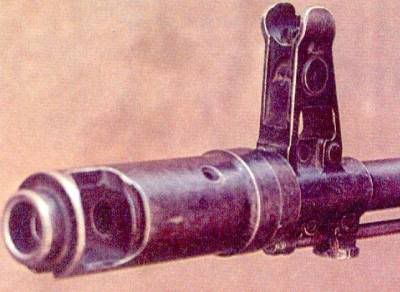
zigzag
Found on:
1979-82 rifles
Description:
classic zigzag, med length collar with small sharp angled beveled taper , thin bridge and sharp tapered baffle

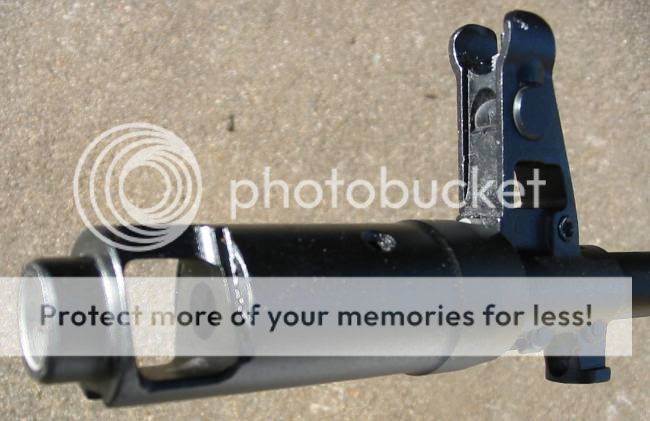
early two piece
Found on:
1983-1984 rifles
(there is some evidence that this brake was used for awhile in 1985)
Description:
two piece welded construction, has the old zigzag collar, thick baffle plate, and bridges

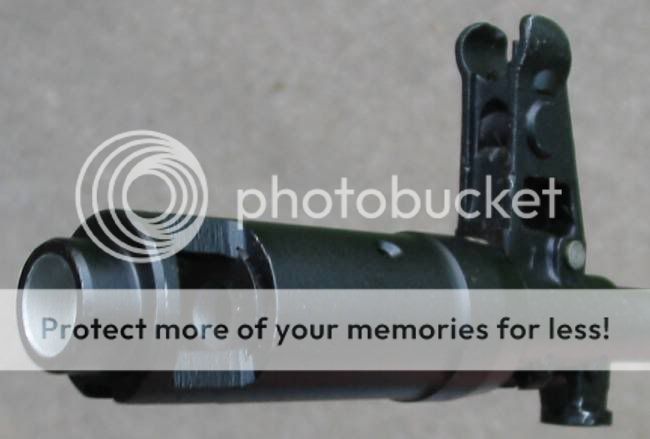
smooth collar two piece
Found on:
1985-1989 rifles
(there is some evidence that this brake, or an early version was used as early as 1984)
Description:
same as the early two piece brake, but with a smooth contoured collar
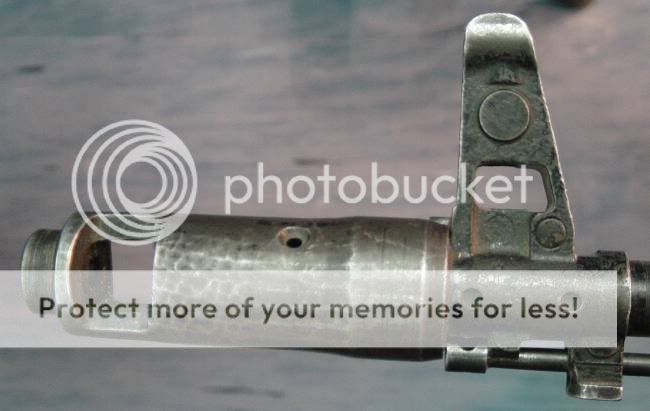
modern extended collar two piece
Found on:
1990-current rifles
Description
same as the smooth collared two piece, but now has a elongated thread collar for more secure attachment
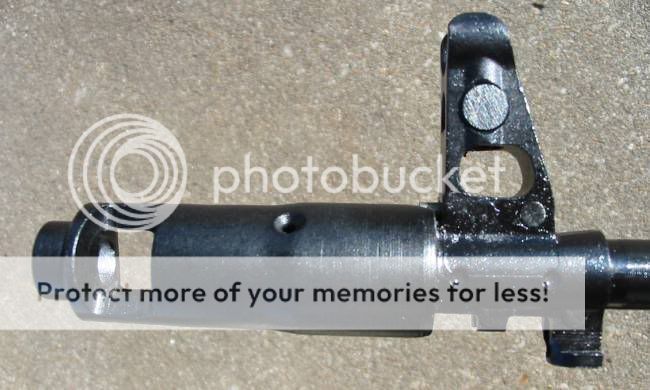

Front Sight Base
A
The first FSB was used from preproduction thru 1976. It looks sort of like an AKM FSB:
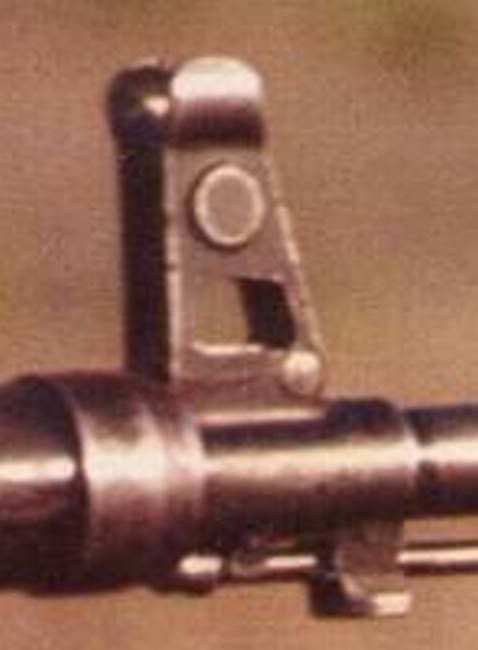
B
The type B FSB was used from late 1976 up till about 1989 or so. It has additional lightening indentations on the sides. Beginning in 1986 this FSB was installed using a press punch rather then being pinned on. Both the B and the C front sight base has a round mold mark on the left side, and a number dash and a number on the right side, best seen in the brake pictures farther down:


C
Type C FSB was first introduced in about 1989 along with the newer improved brakes, it is still in use. Lightening indentations were usually left off all four sides. It is typically punch pressed on in Russian contract rifles, and pinned on commercial made rifles. The threaded collar section of the FSB is longer then earlier examples, in fact the over all length of the entire front sight base is longer:

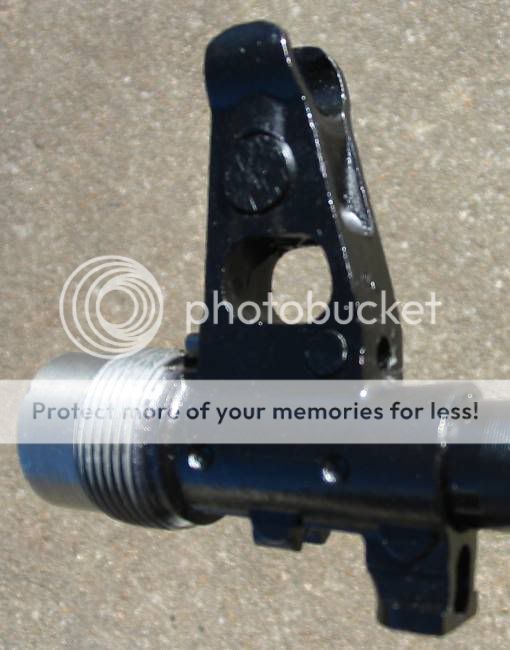
C Alternate
Variation of C FSB, This alternate Type C has the lightening contours on the sides, but not front and back


Cleaning Rod
Early Type A cleaning rods have a large beveled end. Picture at the top is mid production Type B with a large squared off end, bottom is the current Type C, which has a small beveled end:
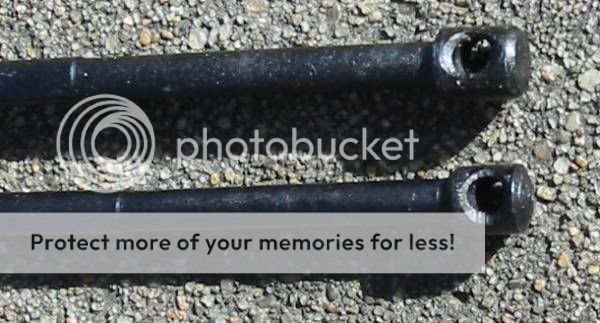
Early Type A cleaning rod with large beveled end:

Gas Block
Type A gas block used up thru 1976, similar to the late cast AKM gas block. Preproduction models frequently lack the grenade launcher lug on the bottom:
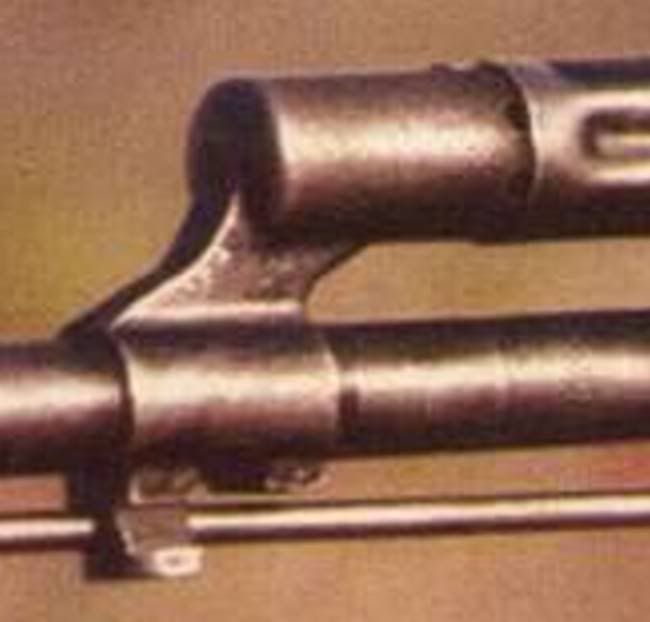
Standard Type B AK-74 gas block used from 1977 till today. Note the round mold mark on the left side. This mold mark is found on all type B gas blocks. (It was determined that the older 45 degree angled gas port had a bad habit of shearing bullets and was eventually replaced with the distinctive, new design--Tantal),


Starting in 1986 or theTtype B gas block was punch pressed rather then pinned on Russian military contract rifles. This example even has the starter holes for pin on mounting:
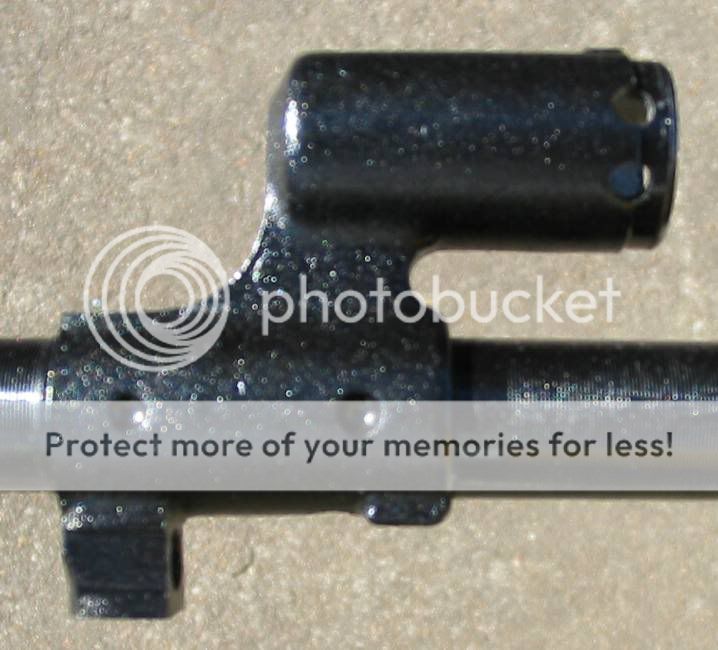

Handguard Retainer
Left is Type A, right is Type B. Type B came out sometime after 1989, it’s lever is rounded off on the end. Both have ears at the front top to secure the handguard in place, a feature AKM handguard retainers lack.

Rear Sight Gase/Gas Tube Take Down Lever
Top is A the old AKM style milled part (AKM pictured, don’t have a real one), middle is B a cast part with slopping shoulders that came out in 1981. Both of these examples have theTtype A gas tube take down lever, a carry over AKM part. Bottom is the late Type C rear sight base with Type B gas tube take down levers. The Type C rear sight base is similar to the B, but it has many of it’s corners rounded off. The Type B take down lever came out in 1987. Type A and B were pinned on, while Type C is typically punch pressed on, as in on this example. The ramp on these rear sight bases are not as steep as on the older AKM part, in that the trajectory of 5.45 is flatter then 7.62.


Rear Sight
Type AKM - 1978 or so
Type B 1978 or so until at least 1986
Type B sometime after 1986 to current
Type A is a carry over AKM part. Type B had a longer “nose”, Type C is current type with half “tick” marks. Left type A, middle type B, right type C.
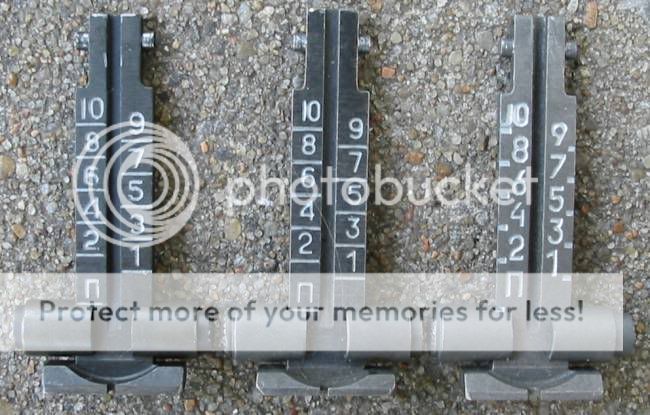
Top Cover
Type A AKM till about 1978
Type B about 1978 thru 1980
Type C 1981 thru 1992 or 1993 or so
Type D from 1992 or 93 and on
Type A carry over AKM part. Type B has an added dimple added just above the selector lever on the extension above the thumb catch. Type C is the “lazy cover”, ribs muted and don’t extend as far down the sides. Type D is the smooth AK-74M cover. Type A on top, B second from top, C second from bottom, D at bottom:


Recoil Spring Assy
There are two types of recoil springs assys. Type A on the left was a carry over AKM part. Type B on the right is current, and was introduced by at least 1986.
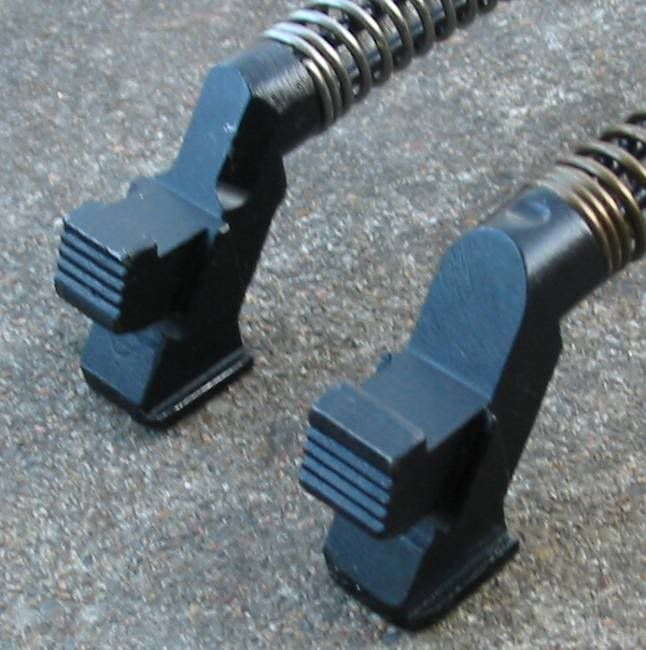
Top type A, bottom Type B:

Selector
Type A AKM - 1979
Type B same as AKM but rivet head now flat 1979 - 1986
Type C different lower contour 1987-current
Top A, middle B, bottom C:

Bolt Carrier
Type A preproduction-1982
Type B 1983-1985
Type C 1986-current
Type A had a AKM type charging handle. Here is a shot of a type A AKM type charging handle compared to a B and/or C beefed up thicker charging handle with a flat rather then rounded back. Bottom is A, top is B and C.
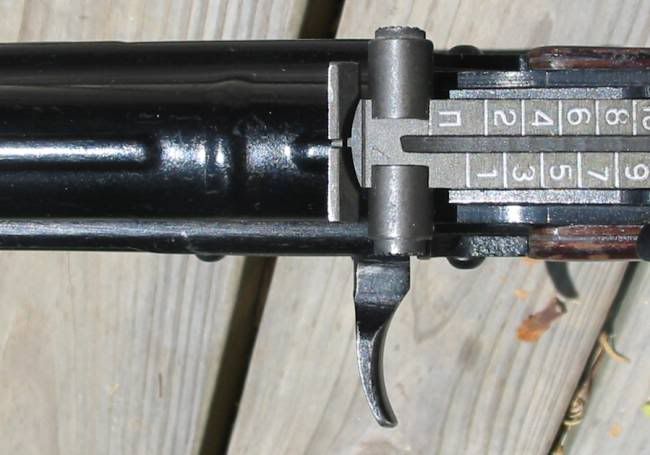
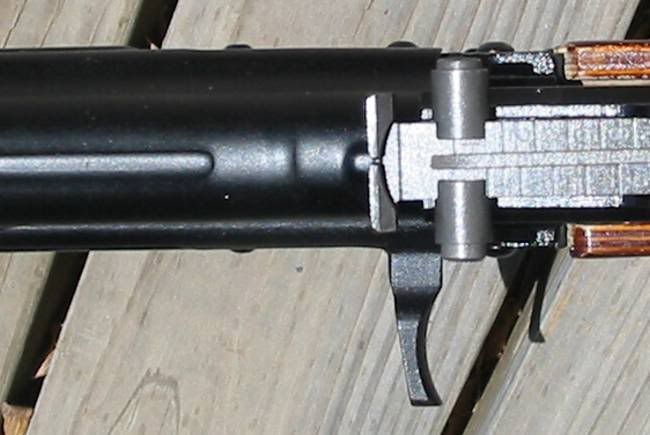
Both the A and B had the gas piston on the left, while the right is a C.

The solid piston head came into use on the C carrier in 1989.
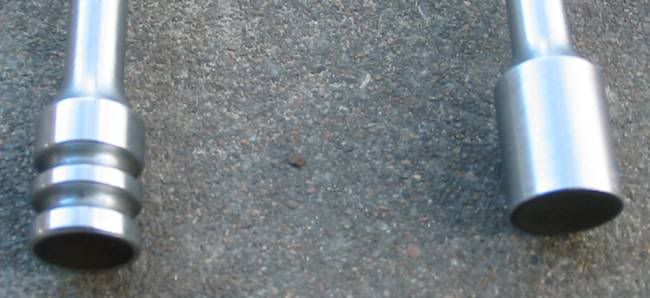
Type C carrier has the left side carrier lightening cut in opposite direction, with the flat being on the bottom, the curve on the front. A and B milling contour on top, and C milling contour on bottom.

Typical “hammer ski” on left (all are about the same), odd variation on the a C carrier on right. Not sure what that is all about. Got that one from Tantal, he describes it as looking like a F117, I agree.
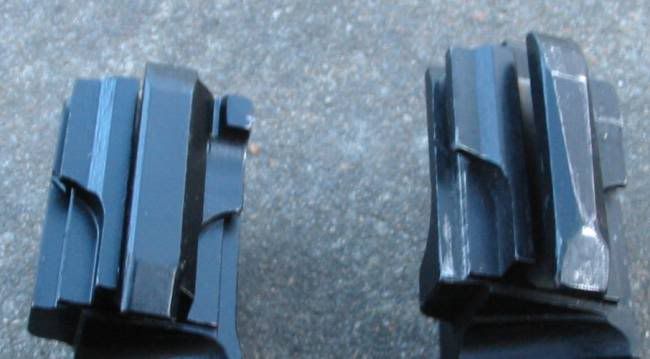
Type A and B carriers have straight cut vertical side mill on right side. Type C carriers are cut vertical but in a radius rather then straight. Later type C’s have the right side milled at an angle starting in about 1992 rather then vertical. There is quite a bit of variance from carrier to carrier as to how this cut is made, possibly it is done by hand? Type A and B on top, early C in middle, late C at bottom.

Trigger
Type A from start till 1982
Type B 1982
Type C 1983-1994
Type D 1994-current
Type A trigger was milled and similar to the late AKM trigger with a hollowed out space in the back, but with a larger hole drilled for the roll pin. The East German rifle had a Type A trigger with a solid back, it is not clear if this is simply a strictly East German variance or not. Type B was a hollow back cast part, it appears to have been a transitional part and to only have been used for part of a year. Type C is same as Type B but with a solid back and the trigger moved back farther on the pad. Type D is same as Type C but with a low hammer engagement hook. Type A left, Type B second from left, Type C second from right, Type D right (note the hollow back on A and B):

Note in this picture you can see the low hook on Type D, and how the trigger is located farther back on it’s pad on Type C and D then on Type A and B:
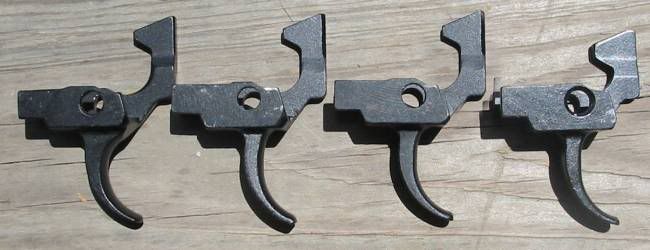
Like the AK-47 and AKM the milled Type A AK-74 trigger was stamped with an arsenal code, while the cast Type B, C, and D triggers have a raised number on the side:
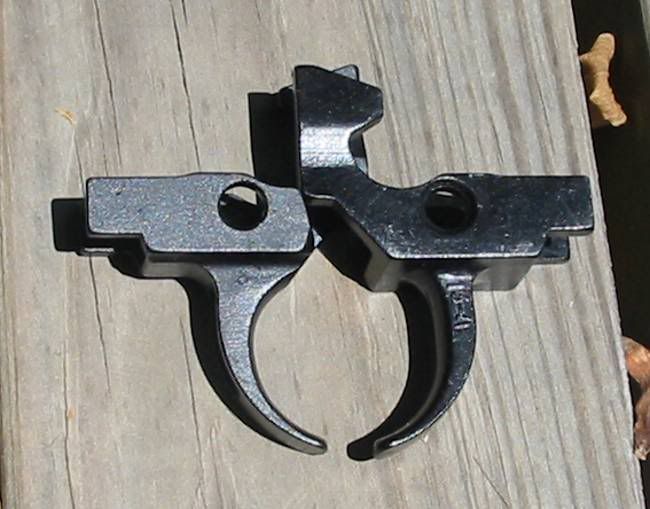
Trigger Guard
Type AKM - 1987
Type B from at least 1987 – current
AK-74 rifles from early production used an AKM trigger guard. The Type B trigger guard has a clover leaf bevel found on the left side, along with a rounded off end where it rivets to the receiver under the pistol grip. Type A at left, Type B on right:

Mag Catch
Type A AKM - 1982
Type B 1982 - 1990
Type C 1990 - current
Type A on the left, Type B pictured in the middle, Type C came at right. Note the trigger bumps, the second bump was introduced in 1987:

Pistol Grip
bakelite grip AKM thru 1984
plum grip 1985 thru 1991
black grip 1991 to current production

On the black grip a silver ink stamp proof is usually found in the trigger guard recess. The plum grip has a silver ink stamp on the opposite side of the numbered side. Typically the left side has the proof, and the right side has the numbers. Some also have a proof in the trigger guard recess.

Rear Trunion
Type A was a carry over AKM part. Type B is a strengthened AK-74 only rear trunion, with the full length forward rivet replaced with two extended arms to both sides, and two separate, shorter forward rivets, moved farther into the receiver and reached production in 1978 A on right, B on left:

Buttplate
There are four basic AK-74 butt plates. There is of course some variations within each of these sub types.
Type A is the original rubber coated as picture on the right, Type B is the one used from 1977 thru 1984. The change over from Type A to Type B occurred at about serial number 400,000.

C is the butt plate found on plum rifles, and D is the AK-74M butt plate:
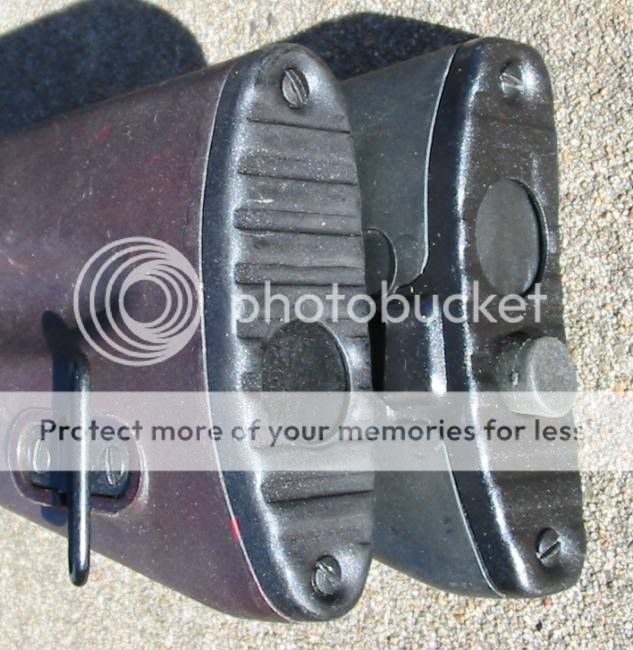
Mag Well Dimple
The first rifles had a dimple that was similar to a late AKM. The later dimple, Type B had more rounded edges and came out in about 1981, and the current Type C has a much smaller flat in the center giving it a more rounded overall contour and was introduced after 1991. Top is C, bottom is B:

Left Side Selector Hole Pressed Reinforcement
Early examples like the AKM simply had a hole drilled for the selector on the left side. Starting in about 1978 a dimple was pressed in where the hole was drilled:

Right Side Selector Hole Pressed Reinforcement
Type A at top and Type B at bottom. Type A was more rounded like on the AKM, while B is more of a flat side oval, change over happened in 1986:
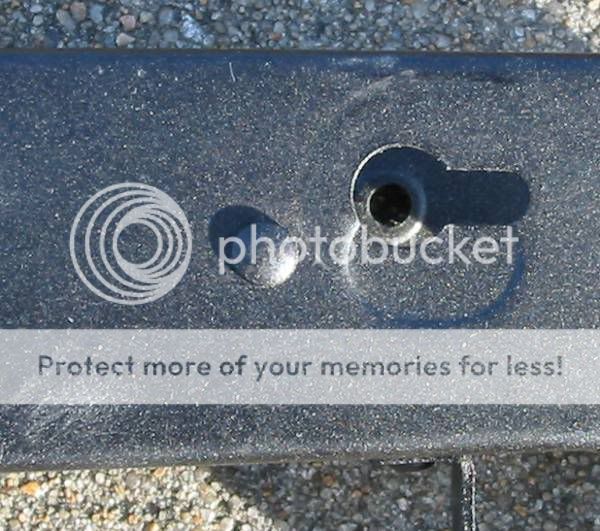

Grip Screw and Nut
Same as used on the late AKM/S with a small diamond type arsenal code on the nut:

Barrel Trunion
Type A pre-production - 1993
Type B 1991 - current
So-called "third rivet" used in some production from 1991 and by 1994 appears to be present in all production. This "starter post" or "bump starter," which acts as a bearing surface and helps the bolt unlock, is now a separate part that can be replaced, and not part of the riveted in feed ramp. The upper rail on the right side of the receiver where the rail folds on top of the barrel trunion has a much larger cut out for use with a Type A trunion. A Type A trunion will not fit in a current production receiver without modification in that the upper rail is not cut back as far. Top is the earlier Type A, bottom is the current Type B:
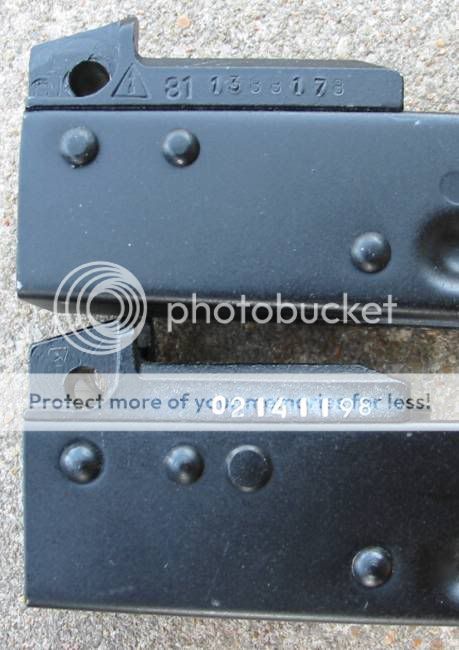
Plum Buttstock
Later plumb buttstocks have a little hump to the left and right of the receiver tang:
img.photobucket.com/albums/0603/Ekie12091941/hump.jpg[/im
 Win a FREE Membership!
Win a FREE Membership!